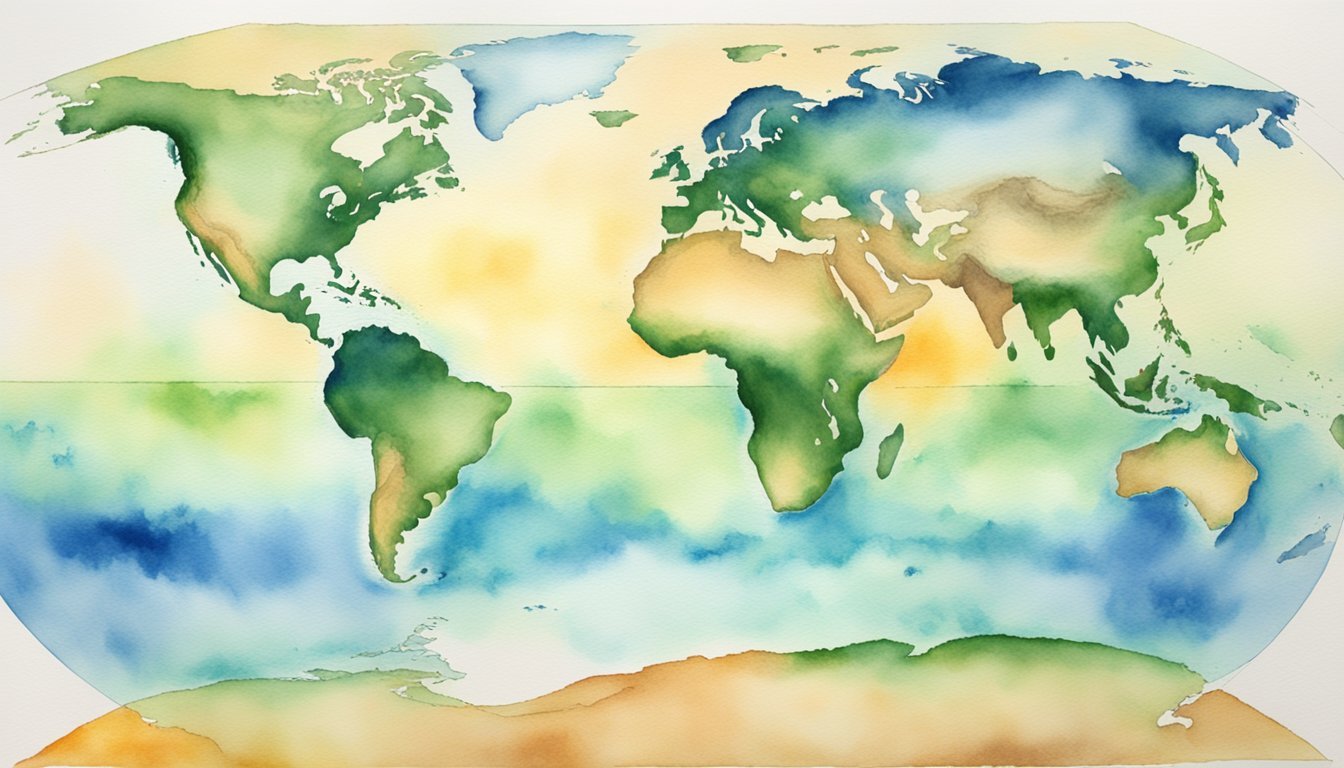Understanding Earth Axis Shift
Earth axis shifts are fascinating events that have occurred throughout the planet’s history, altering the positions of the north and south poles. These shifts, also known as polar drift or polar wander, are the movement of Earth’s spin axis with respect to its crust.
Historical Perspective
The Earth’s axis of rotation has not always pointed at its current orientation. Over millions of years, a phenomenon known as “True Polar Wander” has caused the planet’s surface to move in such a way that the positions of the geographical poles have changed. One study suggests that there was a dramatic 20-degree tilting of the Earth’s rotation axis around 110 million years ago, indicating significant realignment.
Mechanics of Axis Shift
The mechanics behind an axis shift involve complex interactions within Earth’s interior. Convection currents within the molten rock of the Earth’s mantle can exert forces on the crust. These forces can prompt a directional change of the planet’s rotational axis. Changes in the distribution of mass on the Earth’s surface, such as melting ice caps, can also lead to shifts in the axis known as “polar shift.” The axis shift is a dynamic process, influenced by Earth’s ongoing geological activity, which includes the convection of hot rock in the mantle and the cycling of material on the surface.
Human Impact on Axial Drift

Human activities are significantly altering the mass distribution of the Earth, which can influence the axial drift, a phenomenon of changes in the Earth’s rotation and orientation. These alterations have a direct effect on the stability and position of Earth’s axis.
Climate Change and Ice Melt
Scientists have noted a link between global warming and the increase in glacial melting, particularly in regions like Greenland. With the planet’s temperatures rising, ice masses are melting at an unprecedented rate. This ice melt leads to a mass change as the water previously stored as ice in glaciers makes its way into the oceans. The Gravity Recovery and Climate Experiment (GRACE) has provided data that evidences the gravity shift due to these changes. The redistribution of mass caused by melting glaciers, coupled with the shifting of ocean currents as a result, can have an impact on the Earth’s rotation.
Water Weight Distribution
Human intervention in the water cycle, through the pumping of groundwater and the creation of large reservoirs, is altering how water is distributed across the globe. Groundwater pumped from underground reservoirs for activities like irrigation and drinking doesn’t always return to the same spot, often ending up in rivers and eventually oceans, adding to sea level rise. These activities contribute to changes in the Earth’s weight distribution, creating enough force to cause a measurable shift in the Earth’s axis. The axial drift observed is a result of this redistribution of water weight on a global scale.
Observed Effects and Research

Changes in Earth’s rotation can quietly tweak the length of a day and have perceptible impacts. Research on these shifts is crucial for understanding how our planet behaves.
Shifts in the Length of a Day
The Earth doesn’t spin like a perfectly timed clock. In fact, the length of a day can vary. These subtle shifts are due to multiple factors, including changes in the Earth’s atmosphere, oceans, and core. Recent findings suggest that even the melting of ice sheets is playing a role, redistributing mass and thus affecting Earth’s rotation. For instance, the melting of glaciers has been observed to drive the poles eastward, altering the way the planet spins.
Scientific Studies and Findings
Geophysical studies are continuously updated and read to better comprehend these rotational changes. Vincent Humphrey from the University of Zurich has contributed to our understanding of gravity changes and their effects. Moreover, missions like the Gravity Recovery and Climate Experiment (GRACE) have been fundamental in measuring variations in Earth’s gravity field, providing data that informs research on how weight shifts on the planet influence its spin. These studies are imperative for predicting long-term changes to the Earth’s rotation.

